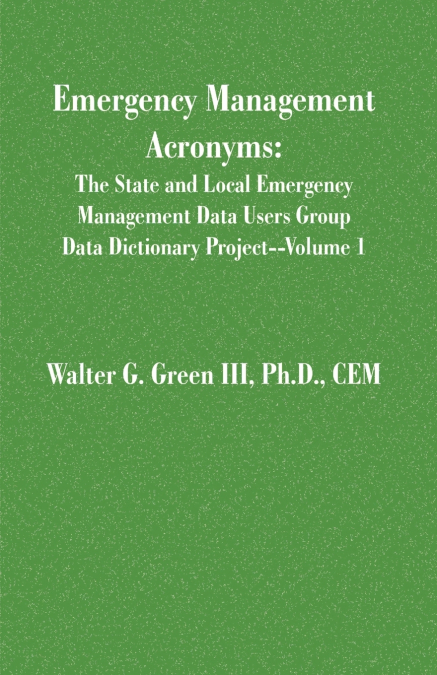
 Librería Perelló (Valencia)
Librería Perelló (Valencia)
 Librería Aciertas (Toledo)
Librería Aciertas (Toledo)
 Librería Elías (Asturias)
Librería Elías (Asturias)
 Donde los libros
Donde los libros
 El AlmaZen del Alquimista (Sevilla)
El AlmaZen del Alquimista (Sevilla)
 Librería Kolima (Madrid)
Librería Kolima (Madrid)
 Librería Proteo (Málaga)
Librería Proteo (Málaga)
The study of emergency management is inevitably the study of words and of those elements of language that act like words. Emergency managers, to a degree that may exceed the practice of many other managers, depend on words to standardize performance, communicate information and decisions, describe situations, etc. However, our meanings often differ from place to place and document to document, making the management and interpretation of information difficult.In 2000 the State and Local Emergency Management Data Users Group (SALEMDUG) initiated an effort to identify standard emergency management terms and their meanings as the basis for data and information management at the state and local level. This project is intended to appear in three phases. The first phase, this volume, is a list of acronyms in current or prior use in civil defense and emergency management, at the local, state, national, and international levels. Acronyms are possibly one of the most transitory features of language. They may appear only in one publication and never be used again. Some survive only as long as the program or agency they describe survives and then fade into obscurity. Many are used only in one country, state, local jurisdiction, or enterprise. Others become accepted as words in their own right and have been widely used for decades. This volume attempts to provide a reasonably broad sampling of emergency management and business continuity acronyms in use from the establishment of Civil Defense in the United States in 1941 to date.